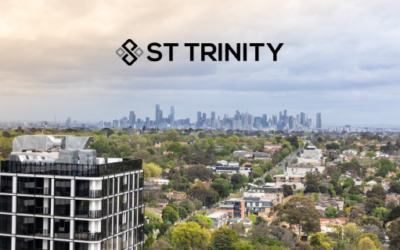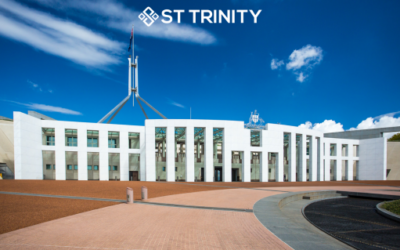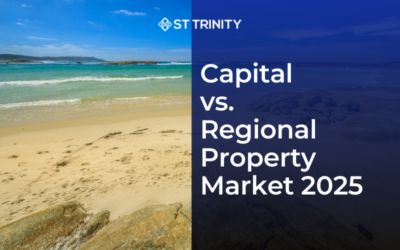It isn’t surprising that the property market shot through the roof last year. After a brief and very small fall in the very earliest days of the pandemic, house prices began to stabilise, then lift, then roar upward at a record pace.
They rose more than 21% in the year from September 2020 to September 2021; the biggest rise Australians have ever seen in decades.
But one does wonder, with property prices already being high, are they bound to go any higher?
Table of Contents
RECORD LOW INTEREST RATES FOR 15 CONSECUTIVE MONTHS
In November 2020, the banks lowered the mortgage interest rates below 2 per cent in response to the Reserve Bank of Australia (RBA) dropping the cash rate to as low as 0.1 per cent.
Since then, RBA has kept their interest rates at its record low, long enough to squash some mortgage rates under 2%. This is the major cause of increased borrowing in Australia, which has helped push house prices up.

WHAT COULD TRIGGER THE 2022 RATE HIKE?
The next move from Reserve Bank will be to raise rates.
According to Governor Philip Lowe, although the current economic conditions were still not suitable for the official cash rate to lift, the growing uncertainty from the Ukraine war and the associated commodity price surge might force the RBA to take action by the end of the year.
“In this uncertain environment – and with the starting points for wages growth and underlying inflation in Australia – we can take the time to assess the incoming information and review how the uncertainties are resolved,” Dr Lowe said.
However, given the outlook, “it is plausible that the cash rate will be increased later this year”.

Reserve Bank governor Philip Lowe – Picture: Lisa Maree Williams/Getty Images
In addition, the RBA has also retained “patience” concerning inflation and wages growth.
According to the RBA, the cash rate is unlikely to rise until there is empirical evidence that wage growth is significantly higher than it is now. In order for inflation to be sustainable, wages must grow at a faster rate.
THE FIRST SIGNS OF SYDNEY HOUSING MARKET DECLINE
According to the most recent CoreLogic report, housing values in Sydney have fallen by 0.1%. It may not appear to be much, but this is the first time Sydney has experienced a decline in the housing market since September 2020.

Source: CoreLogic Home Value Index
According to Tim Lawless, CoreLogic’s Director of Research, all capital cities are now recording a slowing trend in value growth, with Sydney and Melbourne showing the sharpest slowdown.
“The pace of growth in housing values started to ease in April last year when fixed-term mortgage rates began to face upwards pressure, fiscal support was expiring, and housing affordability was becoming more stretched,” said Mr Lawless.
“With rising global uncertainty and the potential for weaker consumer sentiment amidst tighter monetary policy settings, the downside risk for housing markets has become more pronounced in recent months.”
This drop in desire for homeownership isn’t a surprise due to the expected interest rate rise, putting every mortgage holder in Australia on edge.
WHAT DOES TOMORROW LOOK LIKE FOR PROPERTY PRICES WHEN INTEREST RATES RISE?
Even though experts do not expect housing prices to fall dramatically, several other things will happen when rates rise.
- The fixed-term mortgage is trending higher, while variable mortgage rates are rising in line with the cash rate at year’s end. This will likely put weight on lenders borrowing decisions.
- Households are likely to be more sensitive to a higher cost of debt.
- Sydney home listings are approaching average levels, indicating that supply and demand for housing will soon balance out.
While the downside risks to the housing market are growing, there are still positive upsides that will prevent the market from falling, according to CoreLogic.
- With the return of international travel, housing demand, particularly rental demand, is expected to rise.
- A rise in long-term migration would boost purchasing demand over time.
- Improving economic conditions and higher wage growth.

WHAT DOES THIS MEAN TO YOU?
The current interest rate is still at a record low of 0.1%, but it is expected to jump to 1% by the end of 2022 and then 1.25% in 2023.
It doesn’t sound like much, but this raise can make a remarkable difference in the long run for your monthly mortgage repayments. And we are saying hundreds, if not thousands in some cases.
According to ABS data, the average mortgage size in Australia is $549,493 paid over a 25 year period. And if your mortgage rate is 2%, you will need to pay a total interest of $152,222.
But, with a 3% interest rate, your interest costs are $235,234. This is a whopping difference of $83,012!
Those with variable rates will feel the impact immediately, but those on fixed rates will not be spared. Therefore, it’s important to prepare for the rate hike and secure your mortgage and your property at this current rate.
TO WRAP THINGS UP
Buying a property is a big financial decision so it’s important to take your time and get things right from the start.
We know there are uncertainties and mixed opinions on today’s market, it’s tricky to know exactly the right thing to do. That’s why St Trinity is here to guide and make your next step easier.
Do you want a clear path into your property investment strategy?
Click on the link below to enquire and let St Trinity guide you on a path suitable for you.




